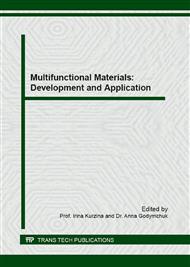[1]
J.H. Huang, Gaseous hydrogen embrittlement of a hydrided zirconium alloy, Metal. Mater. Trans. A. 29 (1998) 1047-1056.
DOI: 10.1007/s11661-998-0297-5
Google Scholar
[2]
T. Murakami, H. Mano, K. Kaneda, M. Hata, S. Sasaki, J. Sugimura, Friction and wear properties of zirconium and niobium in a hydrogen, Envir. Wear. 268 (2010) 721-729.
DOI: 10.1016/j.wear.2009.11.022
Google Scholar
[3]
S.V. Ivanova, Effect of hydrogen on serviceability of zirconium items VVER and RBMK-type reactors fuel assemblies. Int. J. Hydr. Energ. 27 (2002) 819-824.
DOI: 10.1016/s0360-3199(01)00160-4
Google Scholar
[4]
Y. Gou, Y. Li, H. Chen, Evaluation of a delayed hydride cracking in Zr–2. 5Nb CANDU and RBMK pressure tubes, Mater. Des. 30 (2009) 1231-1235.
DOI: 10.1016/j.matdes.2008.06.011
Google Scholar
[5]
Y.S. Kim, Stage I and II behaviors of delayed hydride cracking velocity in zirconium alloys, J. Alloy. Compd. 453 (2008) 210-214.
DOI: 10.1016/j.jallcom.2006.11.197
Google Scholar
[6]
K.R. Silva, D.S. DosSantos, A.F. Robeiro, L.H. Almedia, Hydrogen diffusivity and hydride formation in rich-zirconium alloys used in nuclear reactors, Def. Dif. For. 297-301 (2010) 722-727.
DOI: 10.4028/www.scientific.net/ddf.297-301.722
Google Scholar
[7]
M. Steinbruck, Hydrogen absorption by zirconium alloys at high temperatures, J. Nucl. Mat. 334 (2004) 58-64.
Google Scholar
[8]
N.S. Pushilina, A.M. Lider, V.N. Kudiiarov, I.P. Chernov, S.V. Ivanova, Hydrogen effect on zirconium alloy surface treated by pulsed electron beam, J. Nucl. Mat. 456 (2015) 311-315.
DOI: 10.1016/j.jnucmat.2014.10.006
Google Scholar
[9]
B. Cekic, K. Ciric, M. Lordoc, M. Smilja, M. Mitric, D. Stojic, Kinetics of hydrogen absorption in Zr-based alloys, J. Alloy. Compd. 559 (2013) 162-166.
Google Scholar
[10]
N.S. Pushilina, V.N. Kudiiarov, A.M. Lider, A.D. Teresov, Influence of surface structure on hydrogen interaction with Zr-1Nb alloy, J. Alloy. Compd. 645 (2015) S476-S479.
DOI: 10.1016/j.jallcom.2014.12.078
Google Scholar
[11]
V.N. Kudiiarov, A.M. Lider, S.Y. Harchenko, Hydrogen accumulation in technically pure titanium alloy at saturation from gas atmosphere, Adv. Mater. Res. 880 (2014) 68-73.
DOI: 10.4028/www.scientific.net/amr.880.68
Google Scholar
[12]
D. Wongsawaeng, S. Jaiyen, High-temperature absolute hydrogen desorption kinetics of zirconium hydride under clean and oxidized surface conditions, J. Nucl. Mat. 403 (2010) 19-24.
DOI: 10.1016/j.jnucmat.2010.05.025
Google Scholar
[13]
K.A. Terrani, M. Balooch, D. Wongsawaeng, S. Jaiyen, D.R. Olander, The kinetics of hydrogen desorption from and adsorption on zirconium hydride, J. Nucl. Mat. 397 (2010) 61-68.
DOI: 10.1016/j.jnucmat.2009.12.008
Google Scholar


